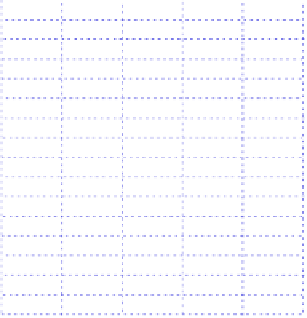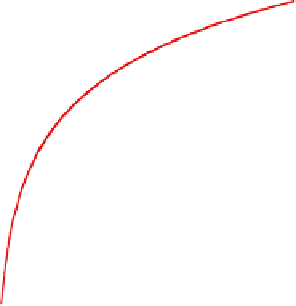Environmental Engineering Reference
In-Depth Information
with transfer coefficients
K
l
and
D
θ
that become function of θ or
h
. The
experimental assessment of these functions is not simple:
- By analogy with the measurement of water permeability with the device
presented in Figure 9.8, we can try to create a steady-state flow without saturating
the medium. For this purpose, given suctions are to be imposed on the upper and
lower faces of the sample through porous plates to keep the stone unsaturated.
Obviously, this experimental procedure should be repeated for each desired water
saturation rate, is not easy to achieve and equilibrium times to reach a steady-state
flow can be fairly long.
- A simpler procedure is to monitor an imbibition from the basis of the sample
by gamma-ray attenuation technique [CHE 99, LAU 93]. In this way, the water
diffusivity is “naturally” obtained and will be seen in next section.
Again, when there is a lack of measurements because of their complexity,
models for estimating
K
l
variations with
h
can be applied [DEL 99, HIL 98]. They
are derived from those presented in section 9.2.4.2. For example, the Brooks and
Corey relation [9.16] yields:
3
2
+
K
(
h
)
h
⎛
⎞
b
l
e
=
[9.27]
⎜
⎝
⎟
⎠
sat
l
K
h
Figure 9.10 gives an example of the application of this formula. It can be
observed that from dry state to saturation,
K
l
varies by many orders of magnitude.
10
-2
10
-4
10
-6
10
-8
sat
K
l
/K
l
10
-10
10
-12
10
-14
10
-16
0
0.2
0.4
0.6
0.8
1
W ater saturation rate S
Figure 9.10.
Estimation of an unsaturated hydraulic conductivity using the Brooks and Corey
model. “Tuffeau” sample identical to Figure 9.6, permeability k
≈
30 mDarcy,
saturated K
l
≈
3 10
-7
m.s
-1
[LAU 96b]




